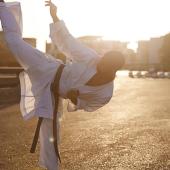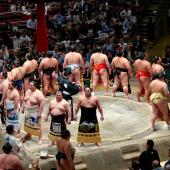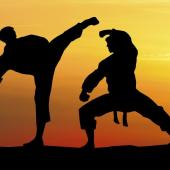Jiu Jitsu
Jiu-Jitsu comes from the Japanese samurai. It is the martial art of unarmed self-defense and represents a synthesis of aikido, judo and karate. There are country-specific heterogeneous types of jiu-jitsu, which differ in various practices of respective techniques.
Loosely translated jiu-jitsu means "the gentle art". It is about the efficient taking out of an opponent with blow, kick, butt, throw, lock and strangulation techniques. At jiu-jitsu, strength does not apply to strength. It is about the principle of "winning by easing" whereas the force of the attacker is to be used against him. Additionally, the spiritual-philosophical aspect, as the code of conduct of Bushido, is also part of jiu-jitsu training. As in other martial arts, there are also fixed, ritualistic elements such as bowing at the beginning and practicing the kata (fixed sequence of movements). Various belt degrees (Kyu and Dan) similar to those of karate are awarded. To reach the next Kyu or Dan degree, their respective association tests students. In the examination, there is much emphasis on the proper technique execution, the attitude, attention, fighting spirit, concentration and the will, to pass the test. Moreover, further values as attending trainings regularly or punctuality have some influence in the assessment.
Around the turn of the millennium, the Japanese jiu-jitsu became known in Europe. The steps and handrails were mixed with wrestling holds and boxing techniques. The result was the European ju-jutsu, which dealt less with soft, flexible principles. Here, the techniques and guidelines for a fight were more prominent. Generally, one can say that the European ju-jutsu is practiced as purely fictional oriented sport and the Japanese jiu-jitsu is rather considered as an art style that tries to preserve the traditions and provides a more individual experimental approach.
In South America, Brazilian jiu-jitsu evolved. This variation of the traditional Japanese jiu-jitsu originated from the teachings of the Japanese master Misuyo Meada, who settled in Brazil in the early 20th century, where he developed his martial arts form. From the Brazilian jiu-jitsu then a new martial art form evolved, at which the martial artists of different styles competed without many rules and with no time limit. This form is called mixed martial arts. Its goal is to KO the opponent or to force him to give up.




